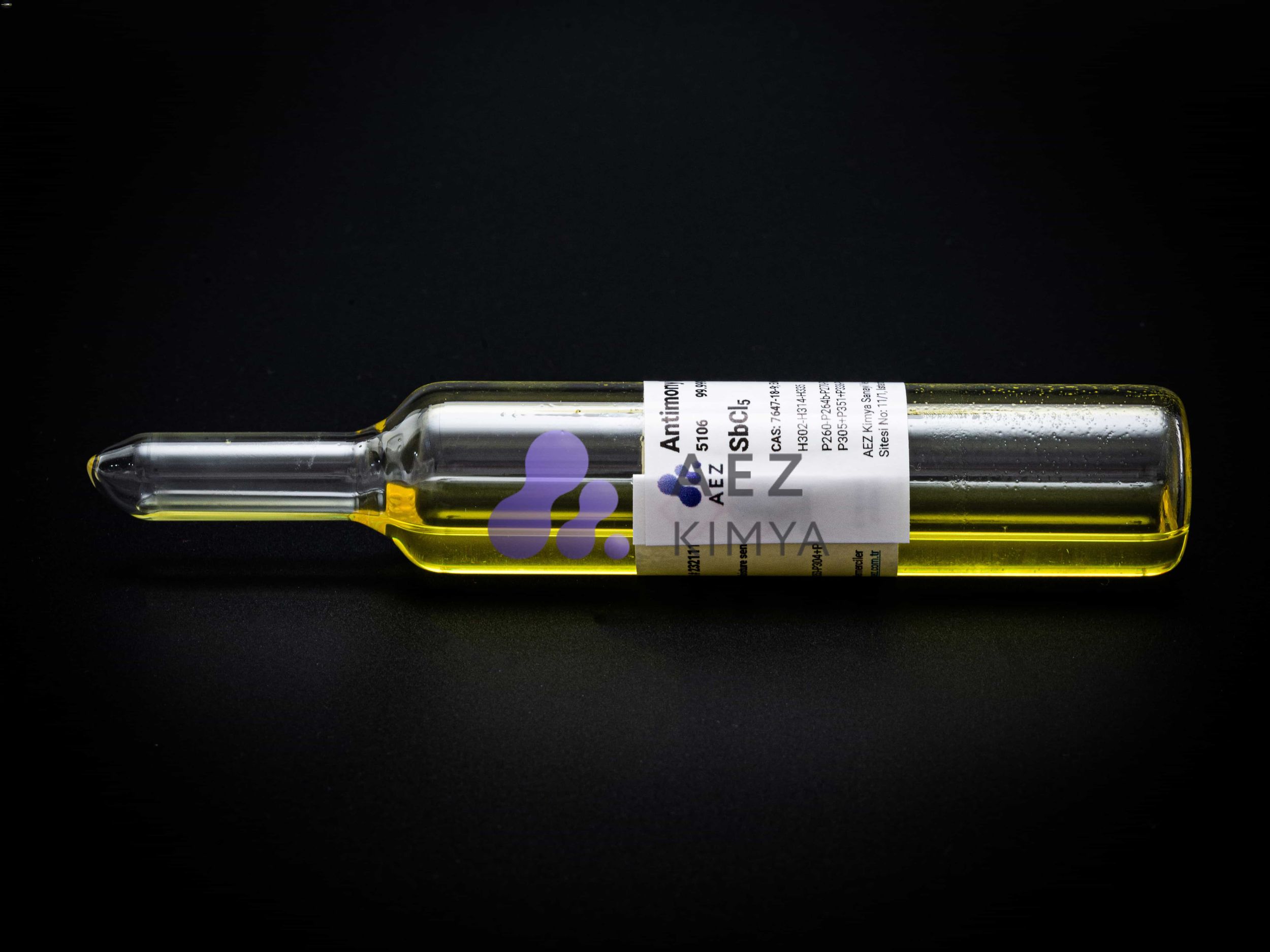
Antimony(V) chloride might sound like a mouthful, but it's a fascinating chemical compound with some pretty cool uses. Antimony(V) chloride is a yellowish liquid that plays a big role in the world of chemistry. It's used in making other chemicals, especially in the production of flame retardants. This compound is also a powerful catalyst in organic synthesis, helping to speed up reactions. But be careful! Antimony(V) chloride is highly corrosive and can be dangerous if not handled properly. Ready to learn more? Let's dive into 25 intriguing facts about this unique substance that will leave you amazed!
Key Takeaways:
- Antimony(V) Chloride: A Powerful Chemical with Diverse Uses Antimony(V) chloride is a strong Lewis acid used in making medicines, dyes, and flame retardants. It's highly reactive, so proper handling and safety measures are crucial.
- Historical and Industrial Impact of Antimony(V) Chloride This compound has a rich history, from early chemical warfare to modern semiconductor industry applications. Its unique properties make it valuable in various chemical processes.
What is Antimony(V) Chloride?
Antimony(V) chloride, also known as antimony pentachloride, is a chemical compound with the formula SbCl5. It is a colorless or yellowish liquid that is highly reactive and used in various industrial applications. Here are some fascinating facts about this compound.
-
Antimony(V) chloride is a strong Lewis acid, meaning it can accept electron pairs from other molecules during chemical reactions.
-
It is often used as a catalyst in organic synthesis, particularly in the production of pharmaceuticals and dyes.
-
This compound is highly corrosive and can cause severe burns upon contact with skin.
-
Antimony(V) chloride reacts violently with water, producing hydrochloric acid and antimony oxychloride.
-
It has a boiling point of 140°C (284°F) and a melting point of -8°C (17.6°F).
Historical Background
Understanding the history of antimony(V) chloride provides insight into its development and usage over time.
-
The compound was first synthesized in the early 19th century by French chemist Antoine Bussy.
-
It played a significant role in the development of early chemical warfare agents during World War I.
-
Historically, it was used in the textile industry for dyeing and printing fabrics.
-
Alchemists in the Middle Ages believed antimony compounds had medicinal properties, though this was later debunked.
-
The name "antimony" is derived from the Greek words "anti" and "monos," meaning "not alone," reflecting its common occurrence with other elements.
Industrial Applications
Antimony(V) chloride has a variety of uses in modern industry, making it an important chemical compound.
-
It is used in the production of flame retardants, which are added to materials to prevent or slow the spread of fire.
-
The compound is employed in the manufacture of certain types of glass, enhancing their optical properties.
-
It serves as a chlorinating agent in the production of organic compounds.
-
Antimony(V) chloride is used in the semiconductor industry for doping silicon, which improves its electrical conductivity.
-
It is also utilized in the synthesis of complex metal chlorides, which have applications in various chemical processes.
Safety and Handling
Due to its reactive nature, proper safety measures must be taken when handling antimony(V) chloride.
-
It should be stored in a cool, dry place away from moisture and incompatible substances.
-
Personal protective equipment, such as gloves and goggles, is essential when working with this compound.
-
In case of contact with skin or eyes, immediate rinsing with plenty of water is necessary to prevent injury.
-
Antimony(V) chloride should be handled in a well-ventilated area to avoid inhalation of fumes.
-
Proper disposal methods must be followed to prevent environmental contamination.
Chemical Properties
The unique chemical properties of antimony(V) chloride make it a valuable compound in various reactions.
-
It forms complexes with many organic and inorganic compounds, expanding its range of applications.
-
The compound can act as both an oxidizing and a chlorinating agent, depending on the reaction conditions.
-
It is soluble in many organic solvents, including benzene, chloroform, and carbon tetrachloride.
-
Antimony(V) chloride can be reduced to antimony(III) chloride by certain reducing agents, such as hydrogen gas.
-
It exhibits strong electrophilic behavior, making it useful in electrophilic aromatic substitution reactions.
Final Thoughts on Antimony(V) Chloride
Antimony(V) chloride, a fascinating compound, plays a crucial role in various industries. From its use in organic synthesis to its application in the production of flame retardants, this chemical showcases its versatility. Its unique properties, such as being a strong Lewis acid, make it indispensable in many chemical reactions. However, handling it requires caution due to its corrosive nature and potential health hazards. Always ensure proper safety measures when working with it. Understanding these facts not only highlights its importance but also underscores the need for responsible usage. Whether you're a student, a professional chemist, or just curious, knowing about antimony(V) chloride enriches your knowledge of chemistry. Stay curious, stay safe, and keep exploring the wonders of science.
Frequently Asked Questions
Was this page helpful?
Our commitment to delivering trustworthy and engaging content is at the heart of what we do. Each fact on our site is contributed by real users like you, bringing a wealth of diverse insights and information. To ensure the highest standards of accuracy and reliability, our dedicated editors meticulously review each submission. This process guarantees that the facts we share are not only fascinating but also credible. Trust in our commitment to quality and authenticity as you explore and learn with us.
